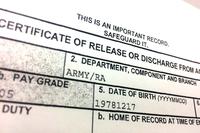Matt Brogdon, an Army veteran, is the Executive Director of Hesperus, a non-profit dedicated to supporting underserved tribal populations including Native American veterans and their families. He has over 20 years of experience in workforce development and technology and is a 2019 George W. Bush Institute Veteran Leadership Program Fellow.
We celebrate our active-duty uniformed troops in this country, often putting them on a pedestal to be venerated from a distance. But veterans are often a different story – we may simply forget their contributions, save for a couple of days a year and usually near an election.This is overwhelmingly true of Native American and Alaska Native veterans. We celebrate the warrior culture and objectify Native Americans through the names of our sports teams, but we forget the flesh-and-blood veterans who return to their tribal communities. And when it comes time to serve the veterans who serve us by providing training for high-paying jobs in growing industry, we ignore the challenges largely unique to tribal areas.
Our nation’s armed forces have a rich heritage of Native American and Alaska Native service, from Ely Parker in the Civil War to Ira Hayes at Iwo Jima. During World War II, over 10% of the Native American population in the United States served, including women in the WACS, WAVES and Army Nurse Corps. Today, despite years of alienation and eradication, Native Americans continue to serve at higher rates per capita than any other demographic group, according to the 2015 American Community Survey.
The disparities that occur along the fault lines of race and socioeconomic background in our society at large also plague veterans after they leave the service. Like many veterans, they return to civilian life with years of technical and leadership training to a waning job market and take jobs, when they can find them, that do not reflect their skills, leadership or career potential.
But Native American veterans are especially disadvantaged, due in large part to the lack of job opportunities in remote tribal areas. According to the 2015 American Community Survey, American Indian and Alaska Native veterans’ unemployment rate was higher than veterans of other races -- 5.6% verses 2.3% -- and showed the lowest personal incomes among veterans of other races or ethnicities at a $27,943 median income verses $36,382 for veterans of other races.
For many veterans, one solution is to look to jobs in the information technology industry, forecast to grow by 12.1% over the next 10 years, according to the Bureau of Labor Statistics. The IT industry can compensate them for their experience, teamwork, and leadership. Critically, these jobs can be done remotely or near their communities, enabling these veterans to return home and also be leaders in their tribal regions.
But for the rural communities and tribal lands most Native Americans call home, those opportunities simply are not available, thanks to a lack of the kind of broadband infrastructure most Ameircans today take for granted, little focused outreach and limited training.
We founded the nonprofit Hesperus to address these problems through education, employment, and technology. Our Summit Program will be our first training program developed specially for American Indian and Alaska Native veterans and will focus on training them for roles in the IT sector.
Through our education partner National University, we provide technical skills training to Native American veterans so they can join the digital economy. We create pathways for jobs through our corporate and nonprofit partners so that Native Americans can work now in the jobs of the future, provide IT industry Native American mentors, connect employers with Native American professionals and, perhaps most critically, support tribal communities through broadband infrastructure and technology to ease the digital divide.
But Hesperus can’t do this alone -- nor should we. No other demographic serves at the rate that Native Americans do and no other demographic is so underserved in their post-active duty lives. As a nation we need to step up to put Native Americans into the jobs of the future where their service, experience and leadership is needed and valued.
-- The opinions expressed in this op-ed are those of the author and do not necessarily reflect the views of Military.com. If you would like to submit your own commentary, please send your article to opinions@military.com for consideration.













